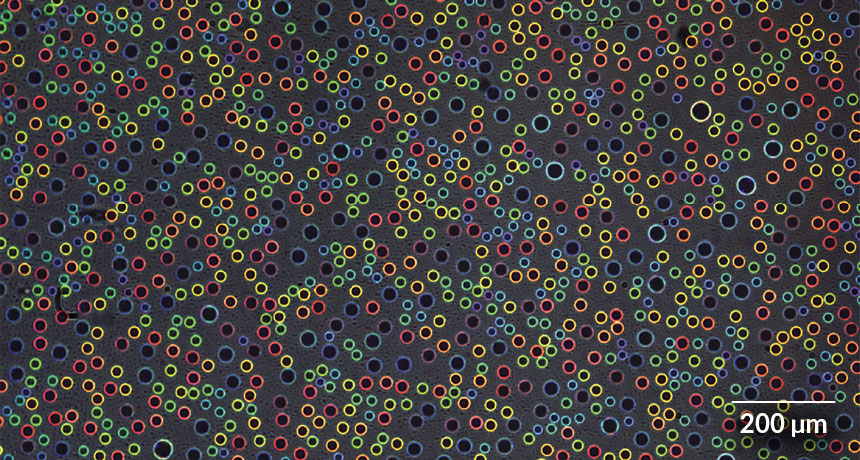How droplets of oil or water can glow vibrant colors
The effect is a type of iridescence, with different colors seen at different angles

DYNAMIC DROPLETS When illuminated with white light, microscopic water droplets emanate iridescent rings of light whose color depends on the drops’ shape and size, as well as a viewer’s perspective.
Zarzar Lab/Penn State